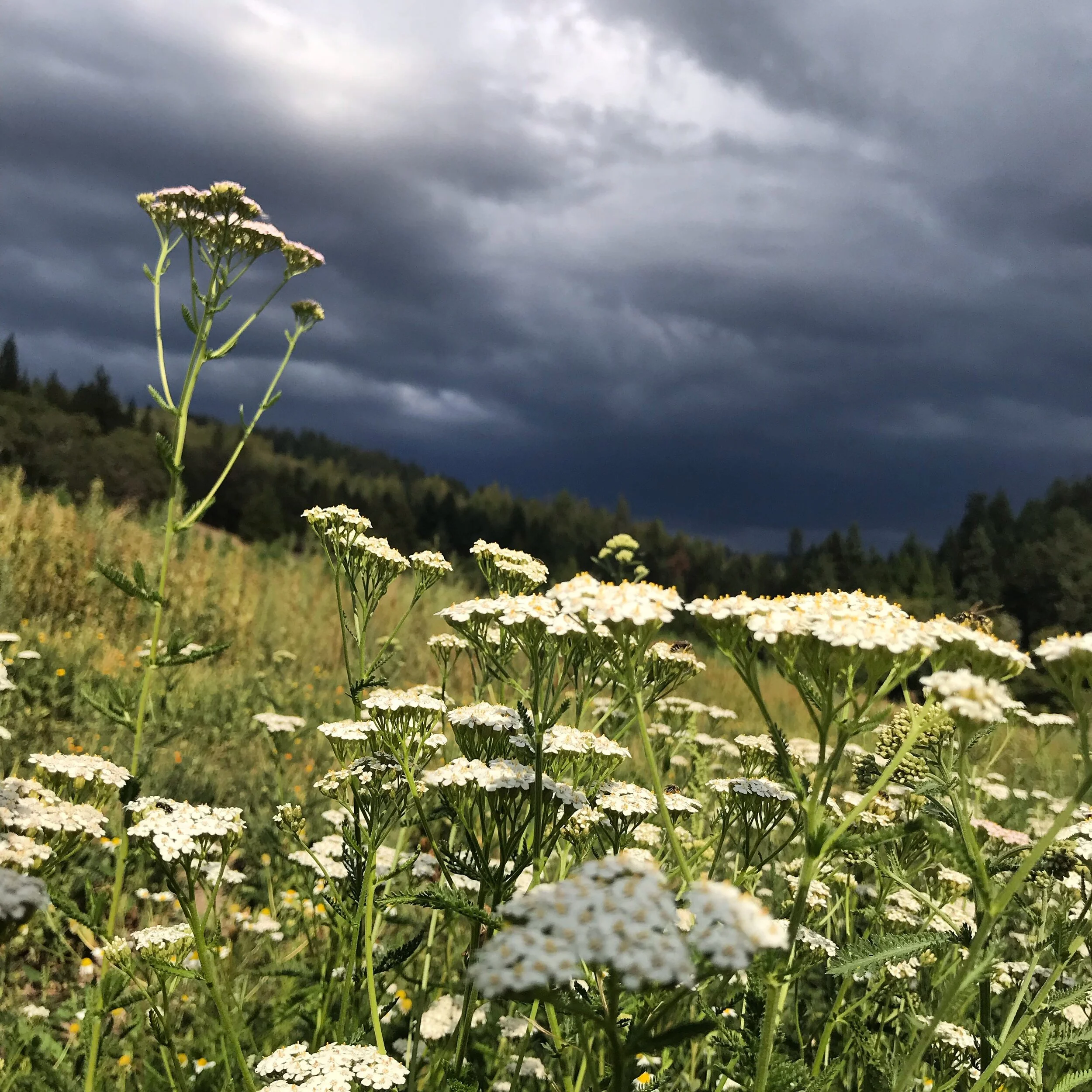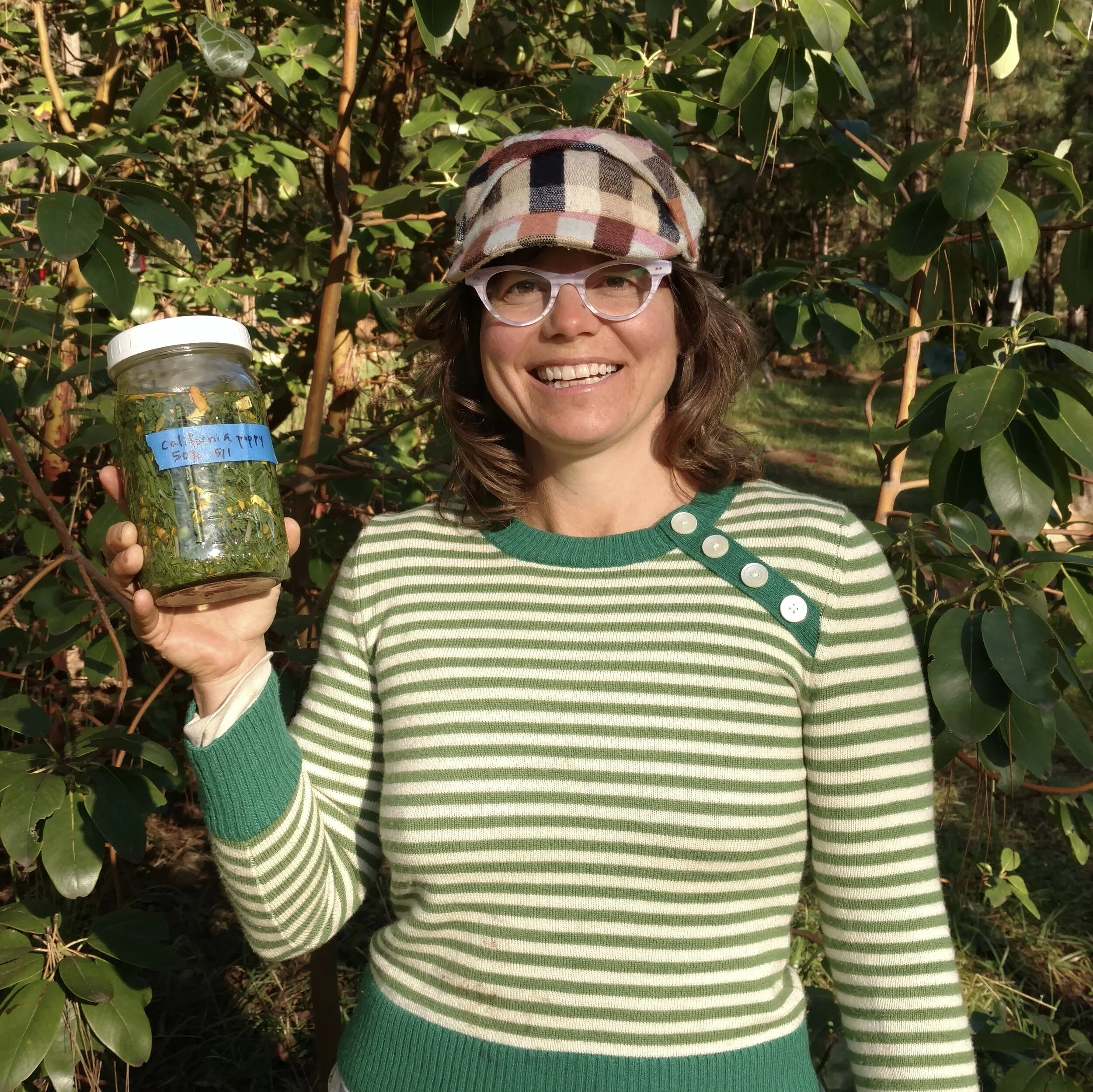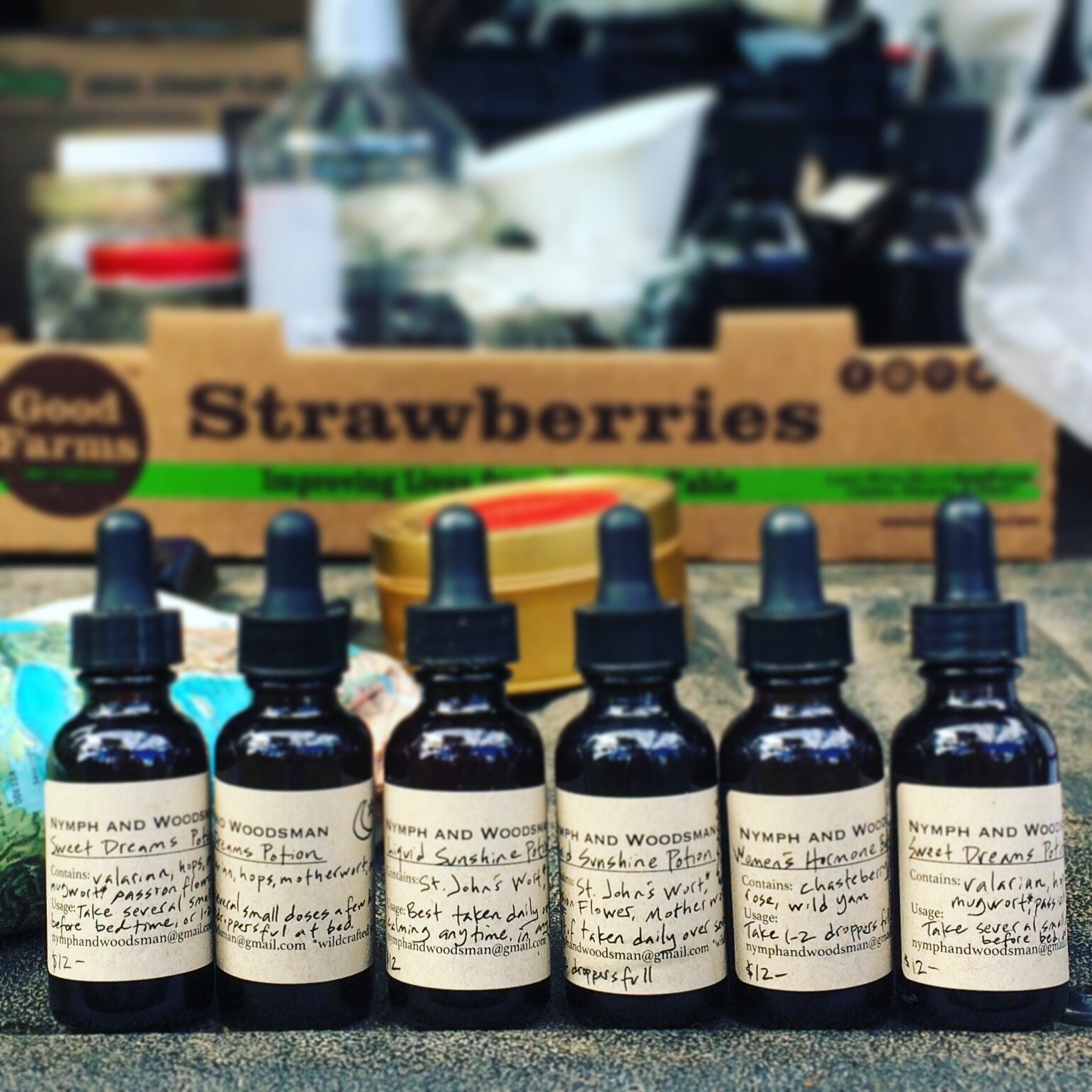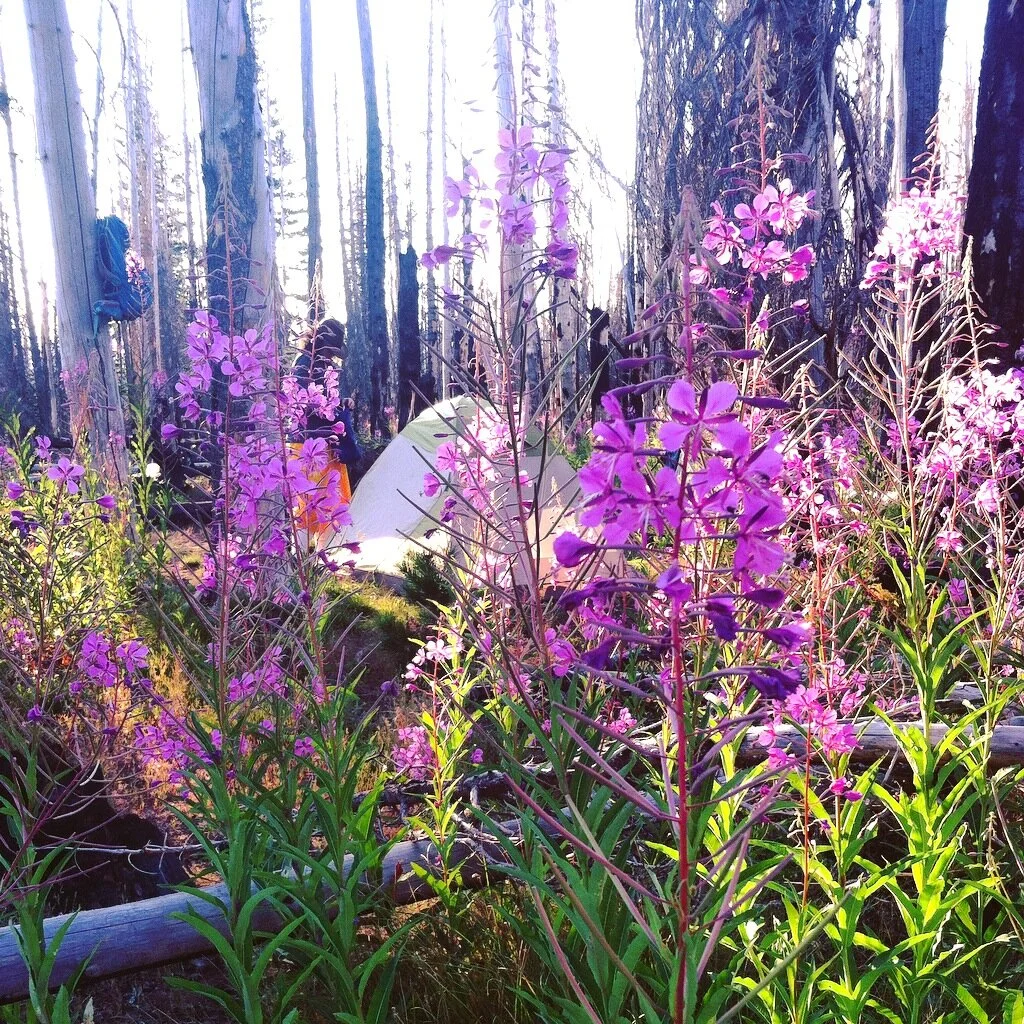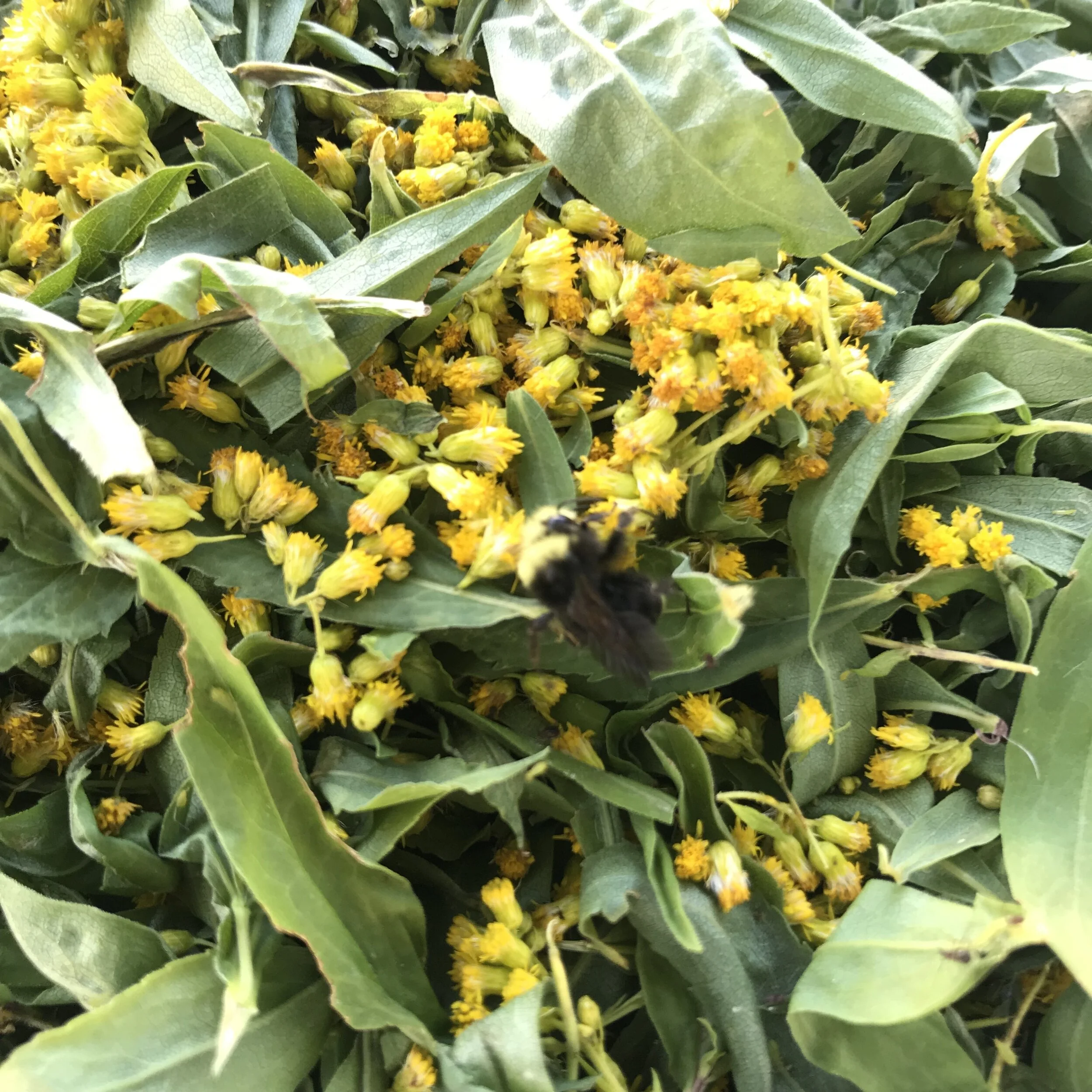Liquid Love: How to Make an Herbal Tincture
Hello loves!
It’s high summer and the plants are exploding in our gardens and in the wilds all around us! And that means… it’s time to make some herbal tinctures! So I thought I’d give you some tips on making your own herbal tincture at home. All you need is a mason jar, some alcohol, and the herb of your choice. For our business, we do a measured “scientific method” of making tinctures, but for home use the “folk method” described below is just perfect. Read on!
Herbal Tincture Recipe
California Poppy Tincture
Finely chop your herb of choice and pack it into a mason jar pretty snugly. A pint-sized jar is plenty for most home apothecaries.
Cover the herb with alcohol that is at least 90-proof. Most folks like to use Vodka because of its neutral flavor, but you can use whiskey, brandy, gin, or rum. Make sure that all the plant material is covered in the alcohol and give it a good shaky shake. I like to sing a song to it when I shake it to infuse it with a little extra healing magic and love.
Label the jar with the name of the herb and the date!
Put the macerating tincture in a dark cupboard for four weeks and give it a shake daily. If you miss some days, that’s fine, but the more you shake it, the more medicine you can pull out of the plants.
After four weeks, mas or menos, strain the tincture through cheese cloth or a muslin bag and squeeze as much of the goodness out of it as you can. Upcycle an old tincture bottle by washing and re-labeling it and pour some of your medicine into it. (Funnels help ; ))
Store your tincture in a cool, dark cupboard. Now you have homemade wild medicine ready to keep you and your family healthy and calm!
Why Make Tincture?
Homemade tincture ready for the cabinet!
Tincturing is a satisfying, inexpensive, and old timey way to make herbal medicine. It’s a fabulous way to extract the essential healing qualities of plants and make them accessible for at least a year. While I love drinking herbal teas for general wellness and acute issues alike, I can’t always commit to drinking enough tea at any given time to fully reap their medicinal benefits. Also, many herbs that make good medicine don’t taste particularly good, so taking my dose in a little bit of juice of water is a more efficient and pleasant way to make the medicine go down. Finally, when I have a variety of single-herb tinctures on hand, I can make blends that address my particular needs at any given time.
Common Plants to Tincture
Fireweed makes good tincture too! It’s great for the runs.
The list of plants you can tincture is fairly endless, so here I’ll list some fairly common ones that you may have growing in your garden or in the wilds near you. Before you use any of these plants, please be sure to identify them positively and do your own research about their effects on the body! Rosemary Gladstar’s book Medicinal Herbs: A Beginner’s Guide is a great reference.
Oregano: Oregano is anti-microbial and anti-inflammatory and I love to take it to prevent getting sick and to reduce my cold symptoms. It’s also good for the belly.
Lemonbalm: Lemonbalm is a awesome multi-purpose medicine to have around. As a gentle nervine, it is a great one to take as a daily wellbeing tonic. I love it best for its calming yet heartlifting nature and add it to most of my bedtime and relaxation blends. It’s also anti-viral, so I like to take it as a preventative and when I feel something coming on. Lemonbalm is also soothing to the belly and tastes good. Try a few droppersfull in some hot water for some instant tea!
Yarrow: Yarrow isn’t often grown in gardens but can be found abundantly in the wilds. This beautiful plant can be confused with some wild carrot species, so make sure you consult your field guide before proceeding. Yarrow is a diaphoretic, which means that it promotes sweating and helps reduce fevers, so I like to take it to address my colds and flus. It also has anti-spasmodic qualities that reduce menstrual and stomach cramps. Used externally, yarrow helps staunch bleeding, prevent infection, and reduces swelling. If you cut yourself while harvesting yarrow, simply crush some leaves and apply them to your wound!
Plantain: This plant is so common that you may have never noticed it, but now that it’s got your attention you will probably see it everywhere. Plantain is a blood purifier, so it’s a good one to take for liver support. It’s also said to be good for coughs and mouth sores. And the leaf, itself, is famous for drawing the sting out of bug bites and stings. Just crush up (or chew) a leaf and apply it directly to a sting. It really is magic.
We use goldenrod tincture for UTIs and seasonal allergies.
St. John’s Wort: These cheerful yellow flowers turn into a gorgeous maroon liquid when tinctured. St. John’s Wort is well known for its ability to balance out melancholy and the blues. Most folks need to take it consistently over a couple weeks to notice its benefits, so I like to combine it with other herbs—like lemonbalm and motherwort—to get a more immediate effect while the St. John’s Wort does its slow thang.
Motherwort: Motherwort is in the mint family and is easy to grow. It can grow up to five feet tall and bees love it! This plant is a dream for the heart and can be taken as a tonic to strengthen the heart muscle and its blood vessels. It also works to calm the spiritual heart, so I add it to most of my heart-opening potions. Motherwort can also ease menstrual cramps and can be used during menopause to mitigate hot flashes and mood swings. Motherwort is NOT recommended for pregnant folks.
Peppermint: Where there’s mint, there’s usually plenty of it! Why not tincture some? Peppermint helps digestion and calms nausea and gas. It also can be soothing to some headaches. Plus, I love having the tincture around to squirt into my hot (or cold) cocoa or sparkles for tasty flair.
Be well! In love and beauty, xoxoxo Becca
Disclaimer
For educational purposes only. This information has not been evaluated by the Food and Drug Administration. This information is not intended to diagnose, treat, cure, or prevent any disease.

